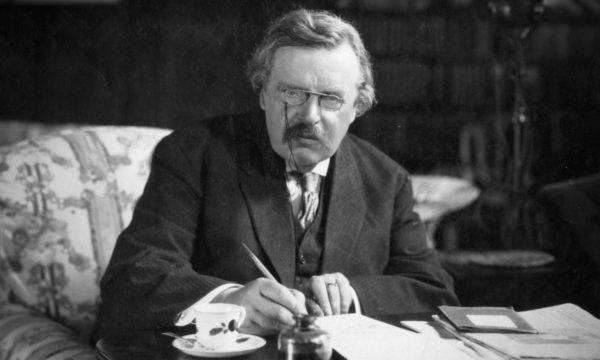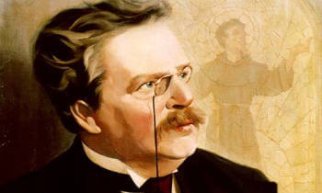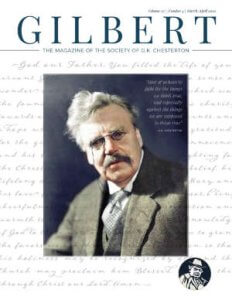Chesterton’s ten “biographies” are more like commentaries rather than accounts of the life and work of their subjects. Heavy on the analysis, light on the narrative. Even lighter on the facts. His subjects sometimes even appear to be secondary to the larger themes he wishes to discuss. His book on St. Francis, however, is unlike any of his other biographies. There are many more facts. The narrative is quite straightforward and highly dramatic. The analysis is supportive rather than overwhelming. Chesterton’s other biographies are really overwhelmed by Chesterton (which, in most cases, is what we would prefer); this one, however, is rightly filled to overflowing by the great saint of Assisi. Chesterton not only gets St. Francis to speak for himself, he does it in the way the little friar would have preferred: by conveying not his words, but his life. Chesterton describes St. Francis as “a poet whose whole life was a poem.”
This is the first real book written after Chesterton’s reception into the Catholic Church, the others being collections of poems, essays, and mysteries. Yet, we cannot sense much transition in Chesterton’s writing. One reason is that his conversion was the culmination of a long steady process in which he never really changed his way of thinking. It was more of a full flowering of all the ideas he had him. There is another reason, and it has to do with St. Francis. Chesterton had always admired this saint. Francis, he says, had “never been a stranger” to him and was like a bridge connecting Chesterton’s early literary life with the later.
St. Francis is one of the most popular saints and one of the most misunderstood. Chesterton says the world appreciates the saint but not the sanctity.
Chesterton describes Francis’ transition from being a soldier and fighter to being a builder and a reformer. He describes Francis as troubadour and a clown of God, singing and dancing for his Lord. Finally Chesterton probes deeply the saint’s mysticism.
The amazing thing about mysticism is how physical it is. Everything in the story of Francis is palpable. He gives away all his possessions to the poor, including the clothes off his back (and also, somewhat unwisely, all his father’s possessions, too.) He hears the voice of Christ speaking to him from a crucifix hanging on the wall in the Church of St. Damian, asking to rebuild the church, and immediately gathers stones and starts to repair the building. He wears a rag, with a rope for a belt. He embraces poverty the way other men embrace wealth, he hungers after fasting the way others hunger for food. He embraces not only all men and women as his brothers and sisters, but all creatures great and small.
After achieving a spiritual depth that would have been more than enough for the rest of us, Francis rushes farther, deeper. He disappears into a cave to be alone with God.
The man who came out of that cave, says Chesterton, was not the man who went in. Whatever happened to him “must remain greatly dark to most of us, [we] who are ordinary and selfish men whom God has not broken to make anew.” And yet interestingly enough, Chesterton does seem to know what it is. The mystic, he says, passes through that moment when there is nothing but God.
If a man saw the world upside down, with all the trees and towers hanging head downwards as in a pool, one effect would be to emphasise the idea of dependence… He would be thankful to God for not dropping the whole cosmos like a vast crystal to be shattered into falling stars. Perhaps St. Peter saw the world so, when he was crucified head downwards…In a…cynical sense…men have said “Blessed is he that expecteth nothing, for he shall not be disappointed.” It was in a wholly happy and enthusiastic sense that St. Francis said, “Blessed is he who expecteth nothing, for he shall enjoy everything.” It was by this deliberate idea of starting from zero…that he did come to enjoy even earthly things as few people have enjoyed them.
Like Christ Himself, this imitator of Christ developed a following. Francis went with eleven companions in peasant costume to ask Pope Innocent III to create a new religious order.But many of the followers of St. Francis treated him as the founder of a religion. The Franciscan spirit brought a certain freshness to all the world. And a freshness to the Church as well. For the Church at this time was over a thousand years old, and was feeling its age. The freshness and freedom of the first Christians seemed as lost and far away then as much as it does now. The Church certainly needed the renewal that Francis brought, but there was a real danger that the sweeping movement of Francis would sweep up all of Christendom. The Pope understood that as great as Francis was, it was not necessary that every Christian should become like Francis. The Pope rightly determined that if the Franciscan movement had turned into a new religion, it would have been a narrow religion, something less than the Universal Church.
Chesterton holds Francis up as a mirror of Christ, reflecting the light of Christ as the moon reflects the sun. Francis’ humility prevented him from ever realizing this. He “was full of the sentiment that he had not suffered enough to be worthy even to be a distant follower of his suffering God.” He did not feel he was “worthy even of the shadow of the crown of thorns.” But he apparently was worthy. Francis, the Mirror of Christ, literally bore on his body the wounds of Christ.





